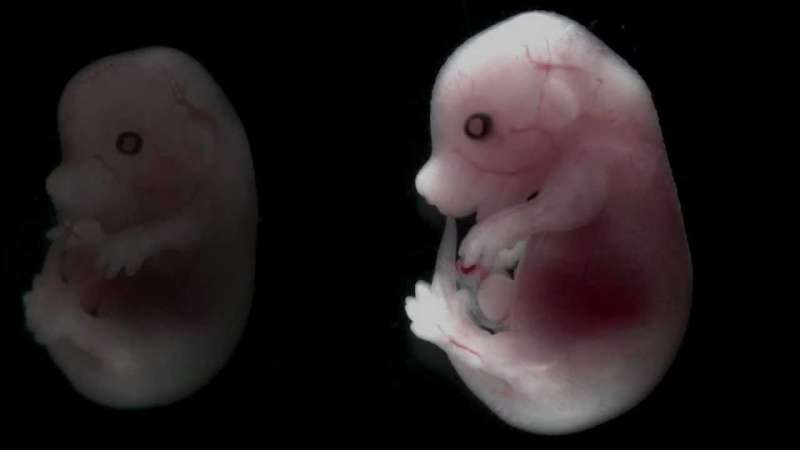April 19, 2016 weblog
Microgravity research satellite explores embryo development in space

A new study shows mammals can be developed in space. China Daily reported on the study Sunday. The experiment involves China's SJ-10 recoverable satellite. Cheng Yingqi said that high-resolution photographs were sent back by SJ-10. "For the first time in human history, it has been proven that the early stages of embryos in mammals can be developed completely in a space environment."
A photo in China Daily showed two-cell mouse embryos, four hours before launch. The report said that mouse embryos carried by the return capsule completed the entire developing process within 96 hours from the launch, the first reported successful development of mammalian embryos in space.
Therein lies the significance of this exploration. A researcher and professor said that there now was proof that the most crucial step in our reproduction – early embryo development – was possible in outer space.
What is China's SJ-10? This is a microgravity satellite which launched on April 6. According to China Daily, "The return capsule on the satellite will stay in orbit for several days before heading back to Earth. An orbital module will continue to conduct experiments for a few more days."
Actually, the Shijian-10 (SJ-10) spacecraft carries 20 experiments covering fluid physics, materials science, and the effects of radiation and microgravity on various biological systems, according to Science. That report on the spacecraft talked about the kinds of tests at play.
Science quoted National Space Science Center (NSSC) Director General Wu Ji in Beijing, who referred to the scientific payload as a grab bag of experiments.
Science described them: "Two combustion experiments will test how materials used in spacecraft burn in space to find ways of making safer capsules for human spaceflight, for example, while another experiment will study crystal growth in semiconductor materials and alloys. Three experiments will investigate how radiation affects genetics, also partly to make future human spaceflight safer. Early mouse embryos will be watched to see whether they develop normally, for clues to whether humans or other mammals could reproduce in space."
Nonetheless, these are only clues about reproduction in space and scientists will need to figure out whether it is possible for us to survive and reproduce in outer space environments as we do on Earth, said Duan Enkui, Professor of the Institute of Zoology affiliated to the Chinese Academy of Sciences, and principal researcher of the experiment.
Items and research process: The SJ-10 carried over 6,000 mouse embryos in a self-sufficient enclosed chamber. China Daily said it was the same size as a microwave oven. "A camera takes pictures of the embryos every four hours and sends the pictures back to Earth. It turns out some embryos developed into advanced blastocysts in four days."
Next steps: "After the embryos are recovered from the returning capsule, scientists will immediately transport them to Beijing and perform further analyses on the developmental speed and changes in embryonic gene and protein expression."
Journal information: Science
© 2016 Tech Xplore





















